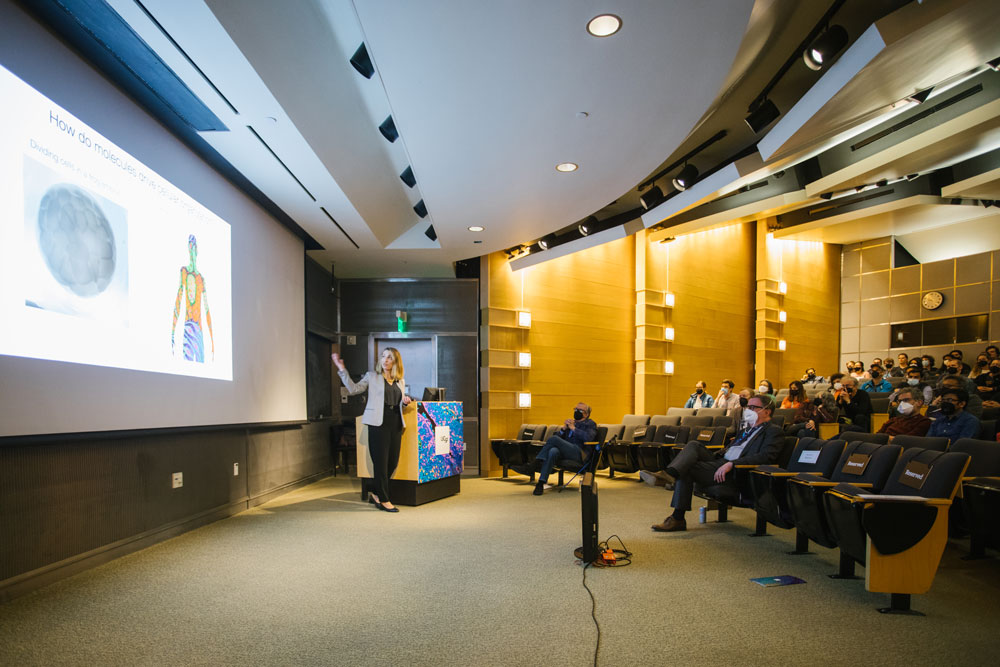Natalia Jura Delivers 2022 Byers Award Lecture on Beating Cancer Through Molecular Photography
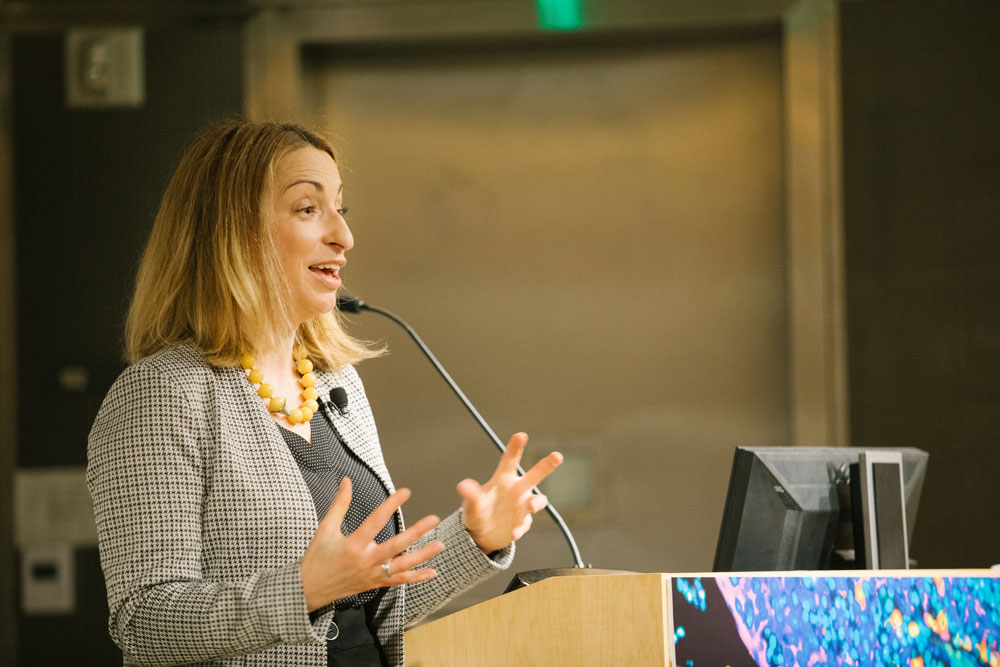
Natalia Jura, PhD, imagines the molecules she studies as dancers. “They have to come together for the magic to happen,” she explained during this year’s Byers Award Lecture in Basic Science, which she delivered on May 2.
Jura’s lab seeks to understand how certain proteins on the surface of cells join to form “dancing partners.” This coupling, called dimerization, initiates signals to a cell that tell it how to behave, such as where to situate itself in developing tissue or when to divide. It’s part of the awe-inspiring “logic of life” that moved her to become a molecular biologist.
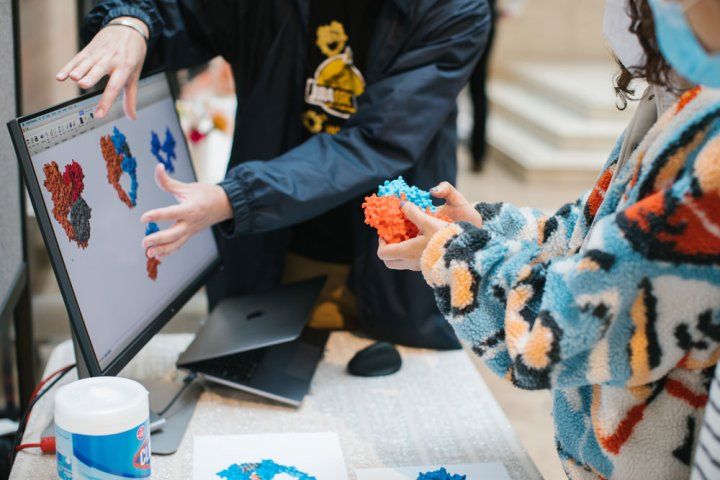
But when dancers follow the wrong choreography, disease can ensue. In her talk, titled “Getting the Message Across: How Cell Signaling Goes Awry in Human Disease,” Jura described her lab’s 10-year-long quest to photograph a capering couple that’s involved in many cases of breast cancer. The resulting images show how mutations in this molecular pair drive cancer growth and point to potential targets for new cancer drugs.
“Natalia Jura embodies our commitment to advancing scientific knowledge for the benefit of people everywhere and by doing that through fundamental discovery science,” said UCSF Chancellor Sam Hawgood, MBBS, the Arthur and Toni Rembe Rock Distinguished Professor.
Jura, an associate professor in the Department of Cellular and Molecular Pharmacology and an investigator at the UCSF Cardiovascular Research Institute, is the 27th recipient of the annual Byers Award. Established with a philanthropic gift from Brook and Shawn Byers and their family, the award recognizes outstanding research by a mid-career faculty member.
“Basic science is the seed corn of ideas,” Brook Byers said. “Unrestricted funding for scientists to pursue their curiosity and take risks is important.”
Natalia Jura embodies our commitment to advancing scientific knowledge for the benefit of people everywhere and by doing that through fundamental discovery science.
Jura’s research has also been supported by the Sandler Program for Breakthrough Biomedical Research, known by the acronym PBBR (pronounced “pibber”). Last year, a $25 million gift from Sir Michael Moritz KBE and Harriet Heyman through their Crankstart foundation permanently endowed the program. The addition of the Sandler name honors its founders, the late Herbert and Marion Sandler, whose Sandler Foundation launched PBBR in 1997 and remains a steadfast funder.
“The impact has been tremendous,” Hawgood said. Over the past 25 years, PBBR funding has led to more than 3,500 peer-reviewed publications, 110 patents, and $1.6 billion in federal and other grants.
From Beer to Breast Cancer
Jura grew up in Krakow, “arguably the most beautiful city in Poland,” she told the audience. Her mother worked for a pharmaceutical company; her father was a professor of electrical engineering. At Jagiellonion University, the alma mater of Nicolaus Copernicus and other science luminaries, she studied biochemistry because she wanted to learn how to make beer.
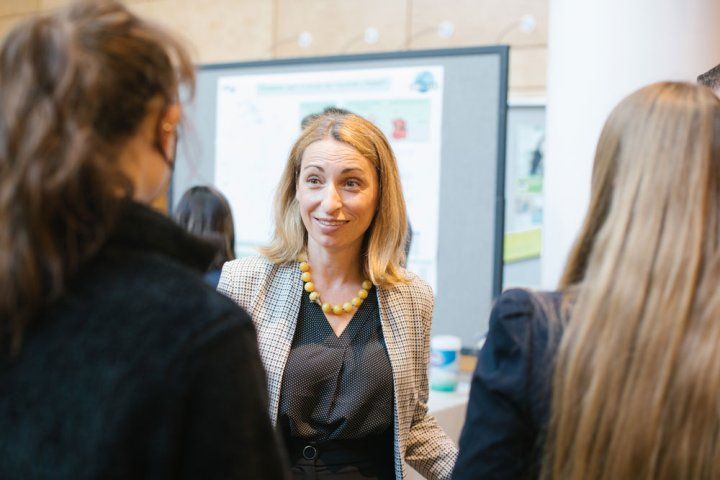
But she was also “blown away” by the mechanics of life – how DNA gives rise to molecules, and molecules to cells, and cells to growing forms that become living organisms. She wanted desperately to know how such self-organization happens. And that question remains the driving force of her lab today.
The answers, however, rarely come easily. A decade ago, when Jura set out to create pictures of the molecular dancers behind some breast cancers, she struggled to fund the project. “Everybody thought it’s going to be impossible,” said Jura, who is also an associate director of the Quantitative Biosciences Institute.
It was true the feat would be difficult. The dancers, called HER2 and HER3, are very small and there aren’t a lot of them in a cell, so it’s hard to extract enough to work with, Jura explained. They also move around, which can blur an image. But with help from PBBR, the quest begun.
To image the molecules, Jura’s team used cryo-electron microscopy, which involves freezing molecules and then flashing them with electron beams. The process is akin to photographing a person from all angles, Jura said, and then constructing a three-dimensional avatar from the snapshots. After years of trial and error and many collaborators, the team finally did it: On their computer screens were perfect portraits of the dancing partners HER2 and HER3.
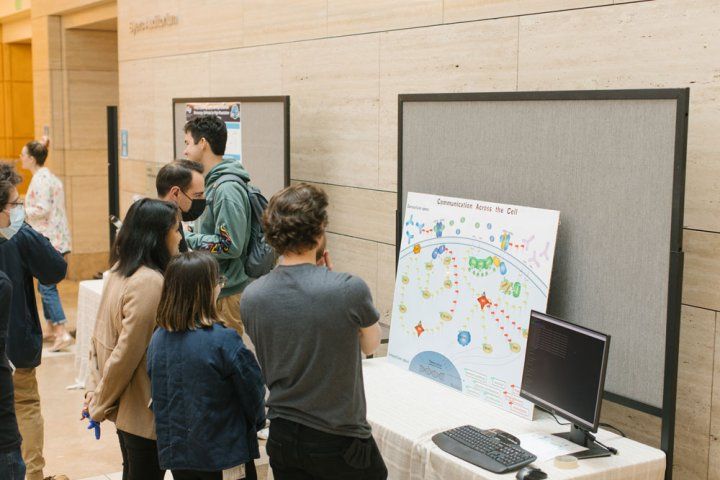
The portraits revealed several secrets about these structures. One was a mutation in the arm of HER2 that occurs in many breast cancers. The pictures showed that this mutation creates a deformity, like an extra hand, that allows HER2 to grab onto HER3 more tightly. “We call it a molecular Velcro,” Jura said. With this increased attraction, the dancers dance more vigorously, amplifying signals that promote cancer growth.
Next, Jura plans to use the dancers’ portraits to try to improve the cancer drug trastuzumab, an antibody sold under the brand name Herceptin and others. The drug works by binding to HER2 and thereby flagging cancer cells for destruction by the immune system. The problem, however, is that HER2 also resides in the cardiac cells, where it partners with HER4 to keep the heart healthy. Heart failure is thus a major side effect of trastuzumab.
Jura hopes to redesign the drug to bind to HER2 only when it is dancing with HER3 and not with HER4. “Perhaps we will be able to then reduce the side effects and have a very efficient cancer drug that results in better patient outcomes,” Jura said. “We are excited.”
